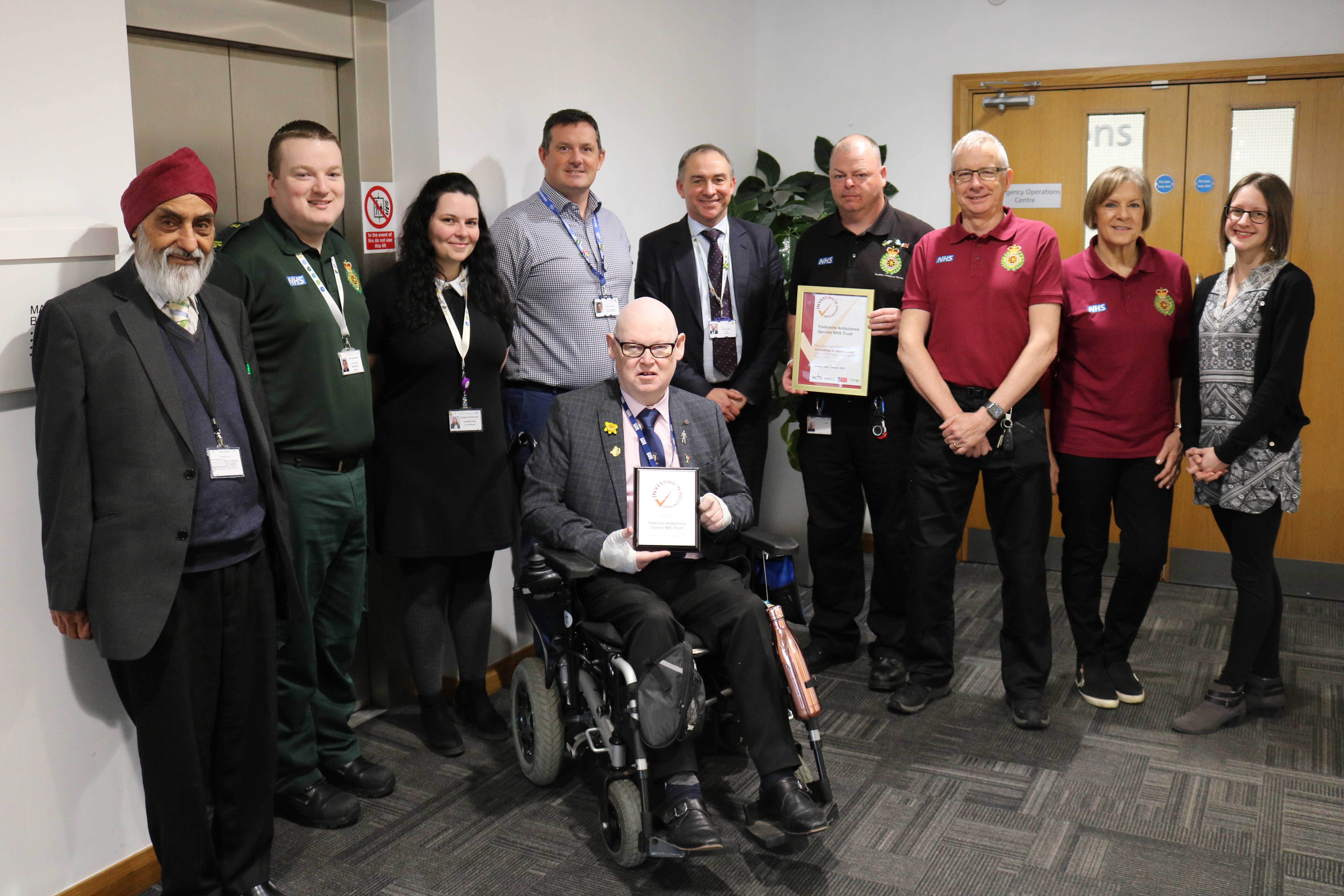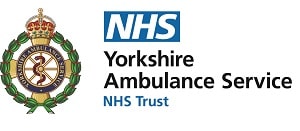Yorkshire Ambulance Service is proud to invest in volunteers
13 March 2020

Pictured from left to right: Karamjeet Singh Virdee (Critical Friends Network), Community Defibrillation Officer Ben Rushworth, Quality and Risk Coordinator Brogan Greenhough, Senior Engagement Lead Jason Carlyon, Chief Executive Rod Barnes, Dean Warburton (Volunteer Car Service and Community First Responder), Andrew Dawes and Kate Cross (Community First Responders), Patient Transport Service Volunteer Coordinator Amy Ingham and (front) Phil Gleeson (Critical Friends Network)
Yorkshire Ambulance Service NHS Trust has been recognised for good practice in volunteer management with the award of the nationally-recognised Investing in Volunteers UK quality standard.
The service has more than 1,000 volunteers working across the region and providing vital help and support to the service and the population it serves. They include Community First Responders, Patient Transport Service volunteer drivers and members of its Critical Friends Network.
Chief Executive Rod Barnes said: “We are absolutely delighted to have secured this important accreditation. All our volunteers are a valuable and crucial part of our team and this standard is a way of recognising that and ensuring we maintain the highest standards for them in the future.
“I would like to take this opportunity to thank every one of them for their time and dedication to the Trust and to the people of Yorkshire and the Humber.”
The Investing in Volunteers standard has been designed to be a rigorous process to ensure that volunteers receive the best possible management support and organisations receive maximum benefit from their volunteers' contribution.
The standard’s nine indicators of good practice cover all aspects of volunteer involvement:
- Planning for volunteer involvement.
- Recruiting and matching volunteers.
- Recognising and rewarding volunteers.
As part of the accreditation process assessors spoke to 72 volunteers as well as some of the Trust’s senior managers and staff who work directly with its volunteers.
Volunteer case studies
Dean Warburton, Rotherham, South Yorkshire
Dean started volunteering as a Patient Transport Service (PTS) driver for Yorkshire Ambulance Service in 2016 and also volunteers in his local community as a Community First Responder.
“I started volunteering after my Dad had a stroke. The ambulance crew who attended him were so brilliant. I wanted to give something back,” said Dean.
“Being a PTS volunteer is a real passion of mine. To see the look on a patient’s face when you arrive at their front door or at the location of their clinic – they are so grateful. Knowing that you’ve taken them to an appointment they would otherwise have struggled to get to, to put them at ease, to know that you’ve made a difference, to see them smile at you, it’s just so rewarding.
“There are no words to describe the rewards you get from doing this role. To get that ‘thank you’ from a grateful patient, or to get a patient safely to their appointment or home and to have made their day better for them is priceless.”
Les Ford, Beverley, East Yorkshire
Les started volunteering as a PTS volunteer for Yorkshire Ambulance Service in 2017.
Les said: “I used to be a taxi driver, and felt that this would be a suitable volunteering role for me as I enjoy driving. However, in this role you’re not just driving – you’re spending a lot of time speaking to individual patients, often hearing about their ailments and sometimes their entire life story. As long as you are interested in life and people then this is a brilliant role!
“I love that, in doing this role, I am able to help people that otherwise would struggle to even get to their appointment.”
Nathan Greenwood, Dewsbury, West Yorkshire
Nathan has always been interested in healthcare so took the opportunity to volunteer - and this was his first step to a career in the ambulance service.
“I saw the Community First Responder role advertised and went for it. The training was good and I got to meet people with similar interests,” he said.
“As a Community First Responder you are out and about in your local community and attending people before an ambulance crew arrives. The work is varied – for example you might just need to calm them down, deal with breathing problems or deal with a cardiac arrest.
“I got to know a lot of the crews as I attended patients and through that I found out about the Emergency Care Assistant role so I applied and started in September 2019. This entry-level role now gives me the opportunity to progress towards a paramedic.”
Produced by: Corporate Communications Department

